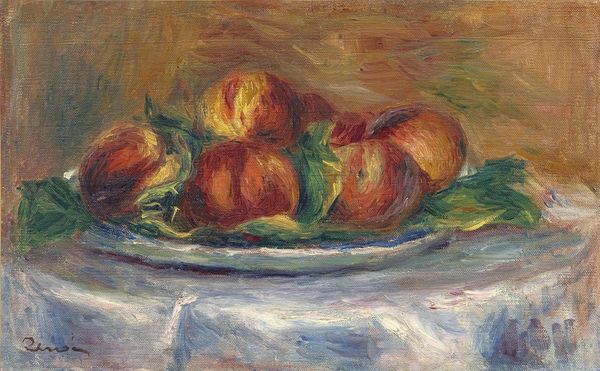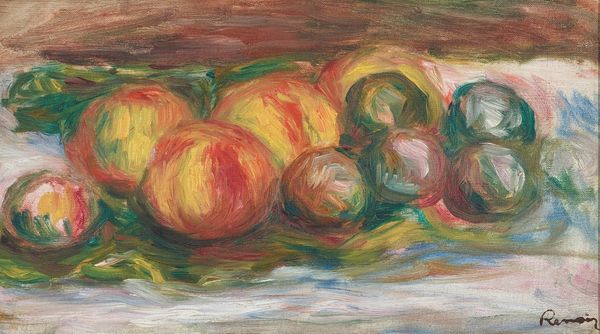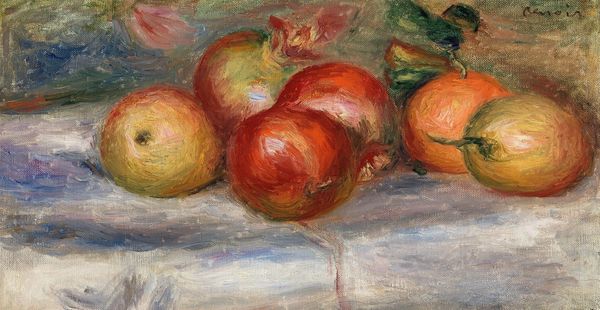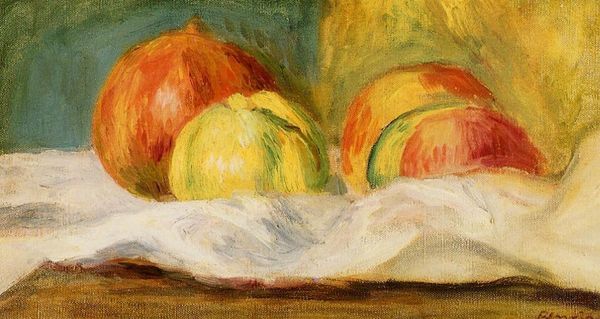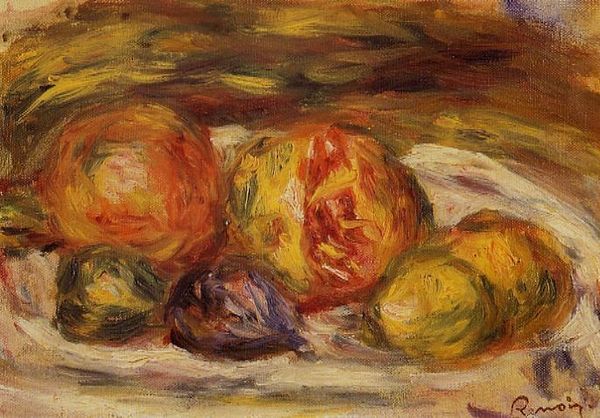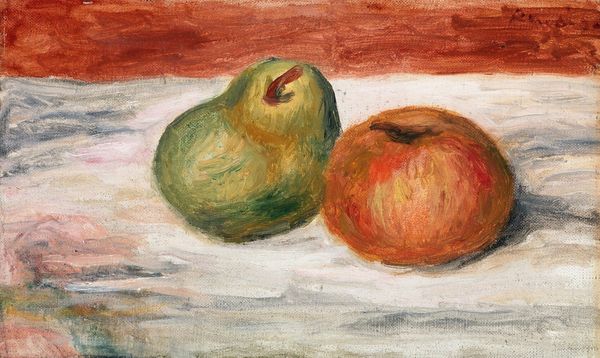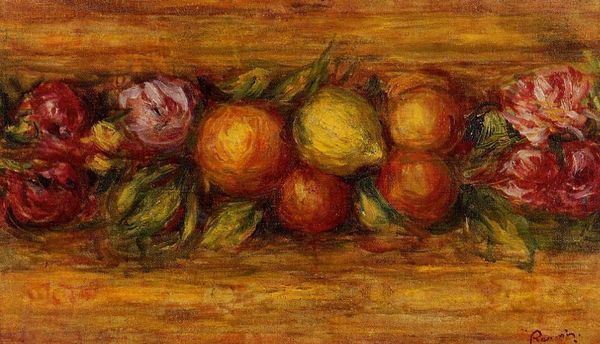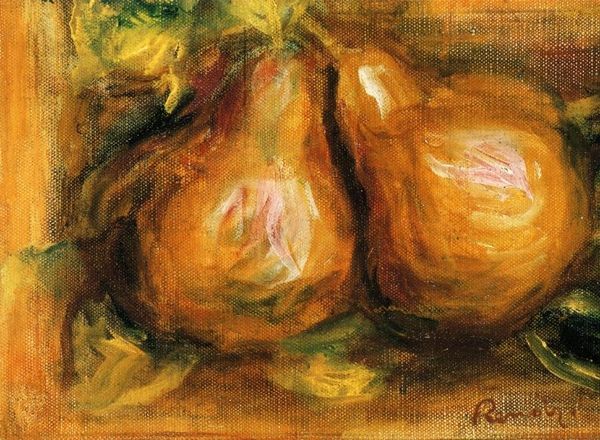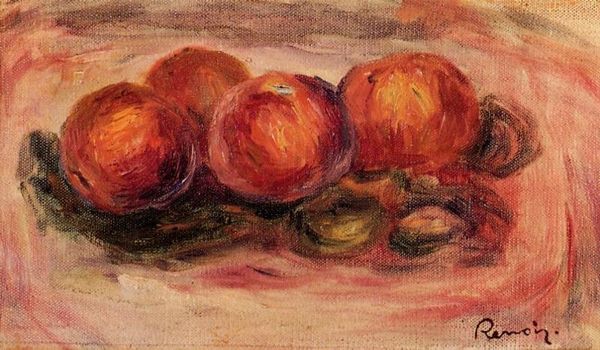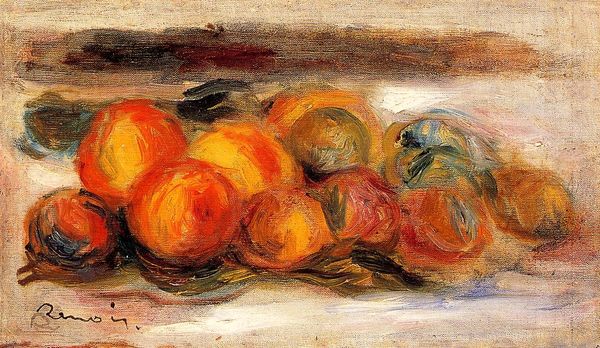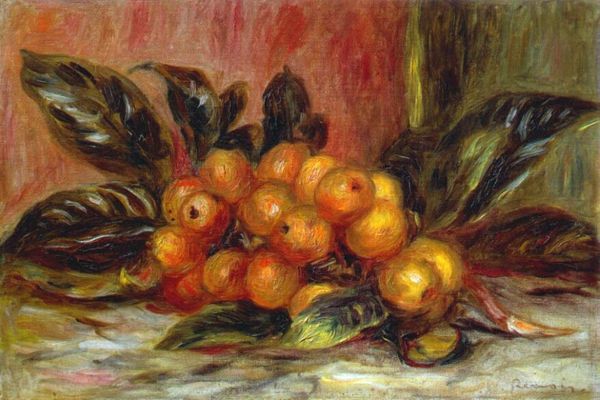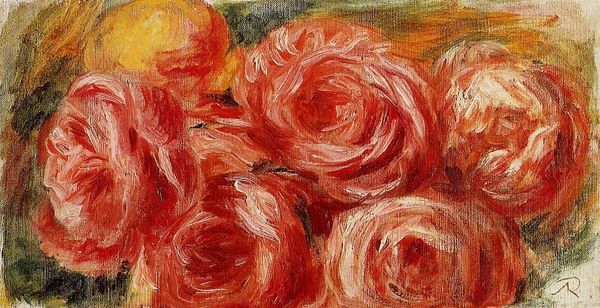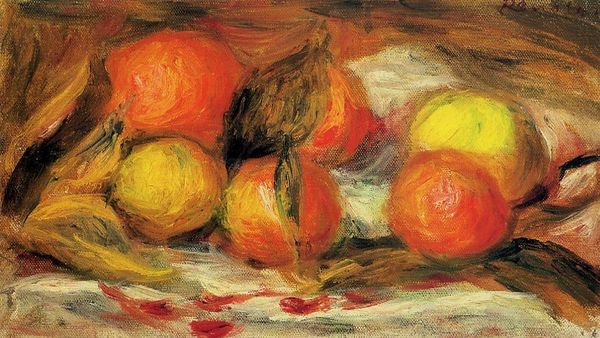
Copyright: Public Domain: Artvee
Curator: Before us is Pierre-Auguste Renoir's "Petite nature morte," likely painted sometime between 1900 and 1910. Editor: It’s immediately striking—that luscious impasto! You can practically feel the heft of the paint on the canvas. The texture seems to bring the apples to life. Curator: Renoir's approach here embodies impressionistic ideals. His focus lies not on precise representation but rather on capturing the fleeting effects of light and colour. It's worth noting the context of Renoir’s later life; grappling with rheumatoid arthritis, the very act of painting would have been arduous, each stroke bearing witness to his physical struggles. Editor: That’s fascinating to consider. The visible brushstrokes, then, speak not just to aesthetics but to the artist's lived experience and labour. I'm intrigued by how the almost sculptural application of oil paint challenges the conventional idea of a still life. These are not passively arranged objects. The material and how he is applying the material becomes central. Curator: Indeed, these apples can be viewed through a wider cultural lens. The depiction of fruit, particularly in still lifes, speaks to themes of abundance and transience. During a period of burgeoning consumer culture, the depiction of something so perishable also reflects anxieties about time and decay. I'm drawn to the almost fleshy rendering of the apples, suggestive of a quiet sensuality that defies conventional readings of simple objects. Editor: I see what you mean about sensuality. The materiality adds another layer to this. Were they locally sourced materials and fruits? Knowing the social history around the production of his supplies makes for a broader and more accurate read. I wonder if, due to material and financial circumstances at the time, this scene of bounty, of still life, might hint at subtle sociopolitical issues relating to class. Curator: Those issues were subtly weaved throughout the artist’s trajectory. I agree, considering Renoir’s broader body of work and the societal norms of the era, the subversive potential within even a seemingly simple still life should not be underestimated. Editor: Definitely a unique dialogue! I think it’s revealed a lot of intriguing possibilities around materials and lived experience. Curator: Likewise, it’s been a fascinating re-evaluation – one which has given me a renewed appreciation for this little still life, given its much larger social context.
Comments
No comments
Be the first to comment and join the conversation on the ultimate creative platform.
